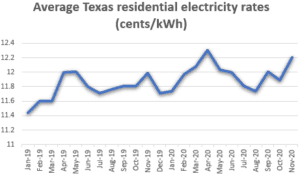One questionable show of energy market thoughts and privatization of electric power structures happened in Chile during the 1980s, in the line up with other market-arranged changes connected with the Chicago Young fellows. The Chilean model was generally viewed as compelling in conveying acumen and straightforwardness to drive esteem. Argentina upgraded the Chilean model by compelling serious endpoints on Baytown Power to Choose Texas market obsession and by chipping away at the development of portions to units held accessible for later to ensure structure steadfastness. One of the central inspirations driving the introduction of market thoughts in Argentina was to privatize existing age assets and to attract the capital expected for the recuperation of those assets and for structure improvement. The World Bank was dynamic in introducing different hybrid business sectors in other Latin American nations, including Peru, Brazil, and Colombia, during the 1990s, with limited accomplishment.
Quantum Jump

A quantum bounce in the power assessing speculation occurred in 1988 when four educators at MIT and Boston School (Fred C. Schweppe, Michael C. Caramanis, Richard D. Tabors, and Roger E. Bohn) circulated a book named, “Spot Assessing of Force”. It presented the possibility that costs in each space on a transmission structure should reflect the minor cost of serving an additional one unit of interest around there. It then, proposed estimating these expenses by handling a systemwide cost minimization issue while following the structure of all useful prerequisites, for instance, generator limit limits, locational loads, line stream limits, etc using straight programming. The locational minor costs then emerged as the shadow costs for relaxing quite far in each space.
The key occasion for power markets
- The cycle followed by the English was then used as a model (or then again if nothing else an impulse) for the modifying of a couple of other Republic countries, exceptionally the Public Power Markets of Australia and New Zealand and the Alberta Power Market in Canada. In the US the standard vertical course organized electric utility model with a transmission system planned to serve its own clients worked splendidly for a seriously prolonged stretch of time. As dependence on a strong stock of force was created and power was transported over dynamically more conspicuous distances, wide locale concurrent lattice interconnections were made.
- Trades were fairly very few and all things considered, prepared for time. Regardless, to some degree as of late in the 20th 100 years, a couple of US methodology makers and scholastics pronounced that the electric power industry would finally encounter freedom, and free system executives (ISOs) and neighborhood transmission affiliations (RTOs) were spread out. They were viewed as the technique for managing the tremendously extended number of trades that happen in a merciless environment. Around twelve states decided to free anyway a couple pulled back following the California power crisis of 2000 and 2001.
- In different freedom processes, the associations and market plans were regularly entirely unexpected yet a critical number of the basic thoughts were something almost identical. These are: segregated the conceivably ferocious components old enough and retail from the ordinary controlling framework components of transmission and spread; and spread out a markdown power market and a retail power market. The occupation of the markdown market is to allow trading between generators, retailers, and other money-related center individuals both for the fleeting transport of influence and for future movement periods.
- A couple of states rejected non-monetary supporters who had utilities from specific pieces of freedom like the client’s choice of supplier. For example, a piece of the New England states rejected common lighting plants from a couple of parts of freedom and these metropolitan utilities don’t have to allow clients to purchase from serious suppliers. Metropolitan utilities in these states can in like manner select to fill in as up-composed utilities and work age assets both inside and past their organization locale to supply their utility clients as well as deal results to the market.




